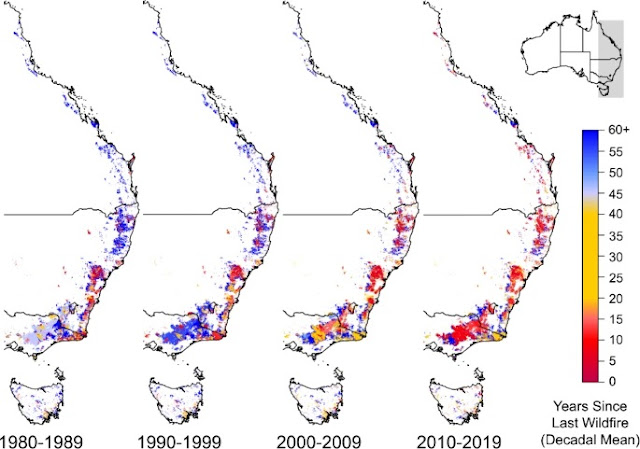Australia is part of Oceania, so I thought it would be worthwhile to revisit it for another aspect of the global warming crisis: how a drying climate over much of the continent is destroying the rain forest. As the planet warms, Australia’s subtropical and temperate forests are drying out and being steadily destroyed by a number of influences, particularly fire. The tropical zone is becoming wetter, but the subtropical and temperate zones, especially in the southeast, are drying out.
Diminished rain and warmer temperatures are driving animals out of their normal habitats, in some cases up into the mountains. But the plants are affected too, especially by repeated wildfires. A common temperate (not rainforest) tree around the mountains is the snow gum, a type of eucalyptus. Like most trees they recover poorly from fires, but the region northwest of Sydney has been burned three times in the past 12 years, causing the tree population to decline.
Burned-out forest in 2020 near Sydney.
Increasing temperature and declining dry season precipitation is increasing the length and severity of fire season, while higher peak temperatures increase the risk of fire. Combined longer, hotter seasons with increasingly desiccated ground and trees have combined to a steady rise in the number and severity of forest fires over the past several decades, especially in the southeast.
Forest fire frequency increases in recent years.
Forest fire trends of recent years.
Heat waves can also hurt or kill trees by causing air bubbles in their fluid transmission systems and blocking the movement of water and nutrients. They are also conducive to disease and pest infestations.
Tomorrow: Easter Island: a cautionary tale.
Be brave, and be well.











No comments:
Post a Comment